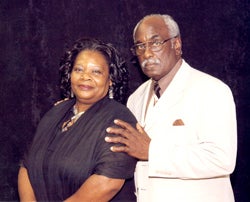
In 1867 Frank and Fred Bunker established a primitive cattle camp on the west side of the Verdigris south of the confluence. From the west the Elk River joins the Verdigris at a confluence slightly northwest of the geographical center of the county.

The Verdigris flows from north to south through the center of Montgomery County. įor a brief time, the Osages attempted to maintain a boundary at the Verdigris River.

This treaty conceded white settlement on land in the eastern part of what is now Montgomery County. As early as 1866, the Osages were forced to cede tracts at the eastern and northern edges of the reservation. After the Civil War ended, the Osage lands were coveted as the largest and last reserve of good land in the eastern part of the state. The reservation had been established in 1825. When Kansas was admitted to the Union as a state in 1861, the Osage Indian reservation occupied a large tract of land near the southern border. It was named in honor of Richard Montgomery, an American Revolutionary War general killed in 1775 while attempting to capture Quebec City, in Canada, after successfully capturing two forts and the city of Montreal. Montgomery County was established on February 26, 1867. In 1854, the Kansas Territory was organized, then in 1861 Kansas became the 34th U.S. In 1803, most of the land for modern day Kansas was acquired by the United States from France as part of the 828,000 square mile Louisiana Purchase for 2.83 cents per acre. In 1802, Spain returned most of the land to France, but keeping title to about 7,500 square miles. In 1762, after the French and Indian War, France secretly ceded New France to Spain, per the Treaty of Fontainebleau. From the 16th century to 18th century, the Kingdom of France claimed ownership of large parts of North America. Others I think you shoul consider including some work from are Spielberg, Tarantino, Polanski and, yeah, Welles as others have said, or some film noir.For many millennia, the Great Plains of North America was inhabited by nomadic Native Americans. Of the other of their films I’ve seen A ROOM WITH A VIEW is pretty good, THE WHITE COUNTESS is bad. Beautiful cinematography and editing on HOWARDS END and SURVIVING PICASSO particularly. Merchant-Ivory Films: period piece specialists. My DOMINO DVD has a featurette on its visual style – goes into great detail on Scott’s multi-camera shooting style, use of various frame rates, and post production – everything they did developing the negative to get the distinct look.

His really interesting stuff comes with MAN ON FIRE and after, but all his films prior to this are very strong too. Tony Scott: one of the most visually fascinating directors around. Olivier Assayas: plenty of stunning cinematographry over the 330 mins.

THE LOSS OF SEXUAL INOCENCE looks well worth checking out too. I’ve only seen LEAVING LAS VEGAS – extraordinary. Mike Figgis: I think he tends to be his own DP, regularly shoots with handheld 16mm, in colour. Mann’s done brilliant Hi-def work with Dion Beebe on COLLATERAL and MIAMI VICE. I think MANNHUNTER is a particular standout also my DVD has a nice feature with Spinotti called The Look of MANNHUNTER. Michael Mann: His regular cinematographer is Dante Spinotti – all their collaberations are very striking. Nice cinematography and interesting editing tend to be a very large part of what I respond to in films.Ī few directors I’d recommend you include on your site sometime would be –


 0 kommentar(er)
0 kommentar(er)
